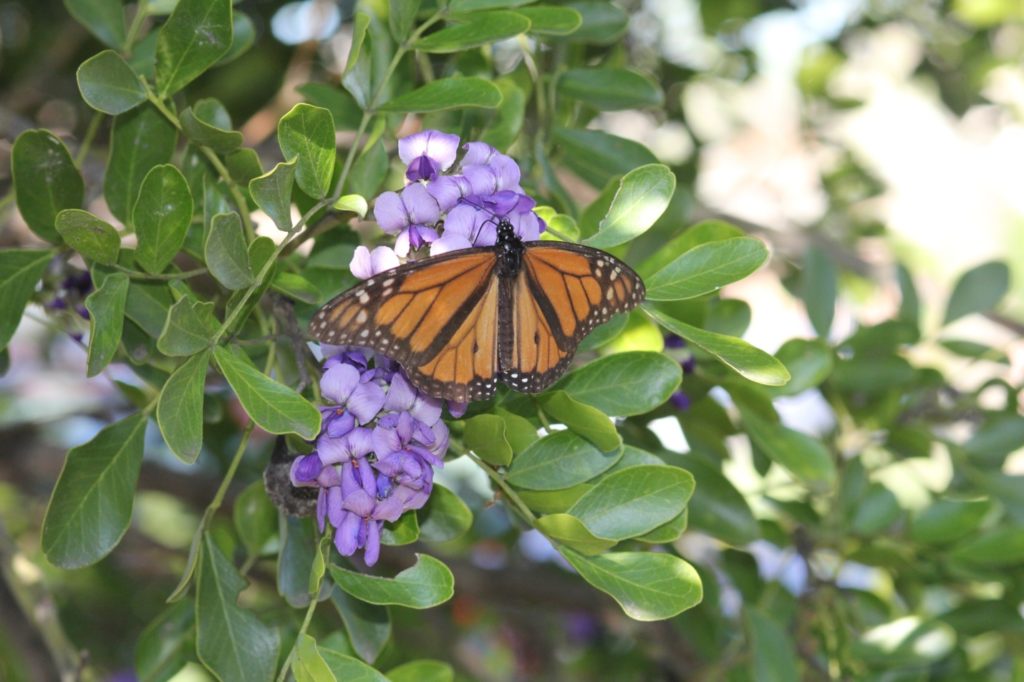To plant a garden is to believe in tomorrow.
Audrey Hepburn
Today we are living through some strange times, and it is easy to lose our way in feelings of helplessness and hopelessness, and pessimism about tomorrow. There are problems so big loose in the world today, that we can feel powerless to affect anything.
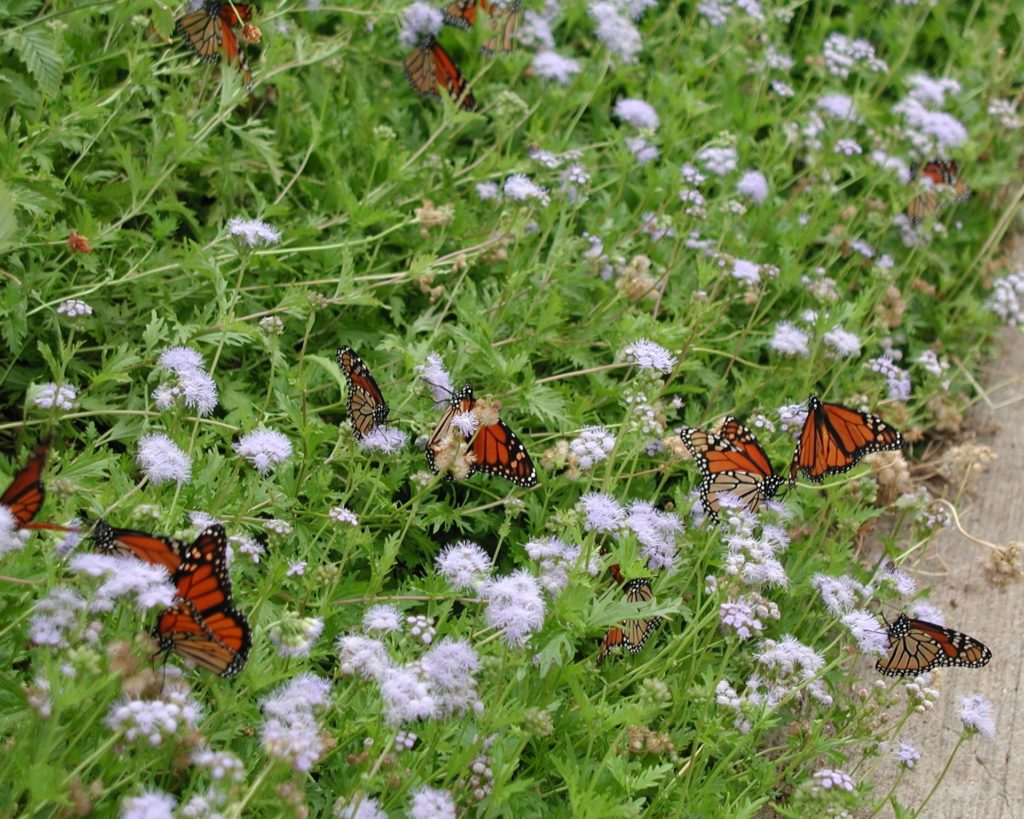
I want to assure you that it’s not true! Things you can do in your own landscape with native plants can make a huge difference, because after all, small spaces can make a big difference to small creatures. Butterflies, native bees, beetles, and others are all suffering steep population declines. Those small creatures are the foundational pieces of a working ecosystem, which in turn, supports us all. Without small invertebrates, birds cannot feed their young, and the effects are felt all the way up the food chain. Without bees, beetles and butterflies to help pollinate crops, our own wellbeing is in danger.
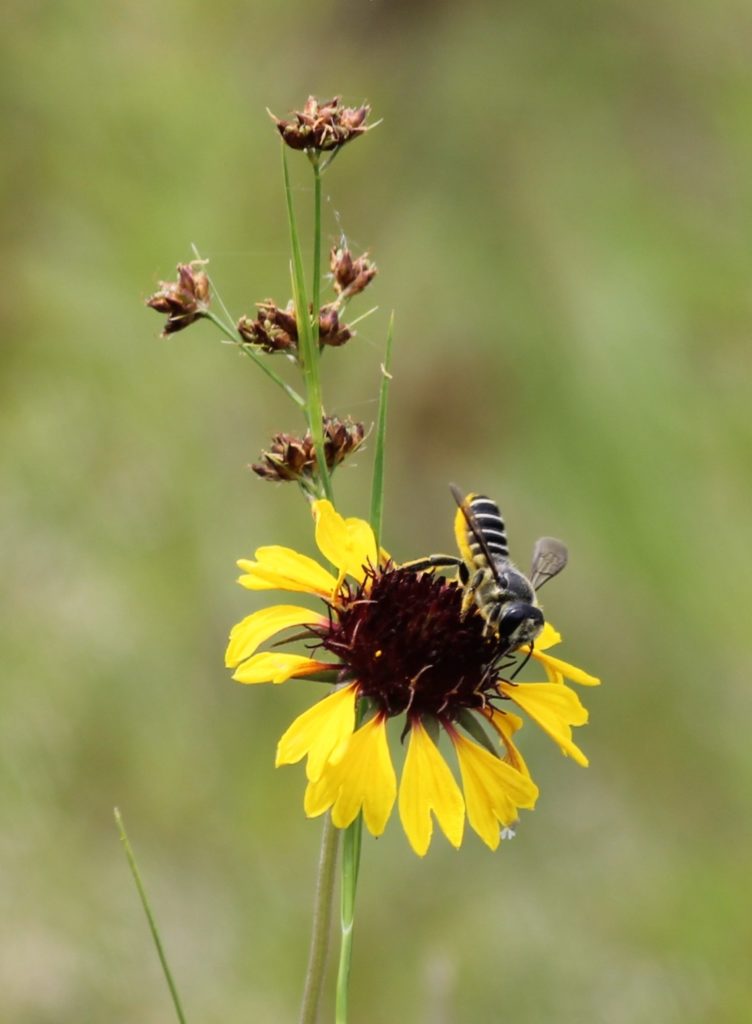
The numbers for the overwintering population of Monarchs in Mexico are out for the 2019/2020 season, and they are not as good as we hoped they would be. Though the numbers seemed strong last summer, Texas had a wide band of drought stricken land as Monarchs passed through on their way south last fall. Many likely starved trying to cross that band. Travelling, I was struck by the number of butterflies and native bees crowded into tiny suburban and urban landscapes last fall–where the only available nectar flowers were blooming. When rains didn’t come and it wasn’t feasible to supply water to parched ranches and parks, those tiny urban oases, lovingly tended by their owners, were almost the only places small creatures like Monarch Butterflies could find a meal. We can’t control the rain and the heat, but if we can sustain many more tiny patches where people can nurture plants along, we can help not just the insects, but also the birds and other small animals that depend on seeds and insects to make their livings.
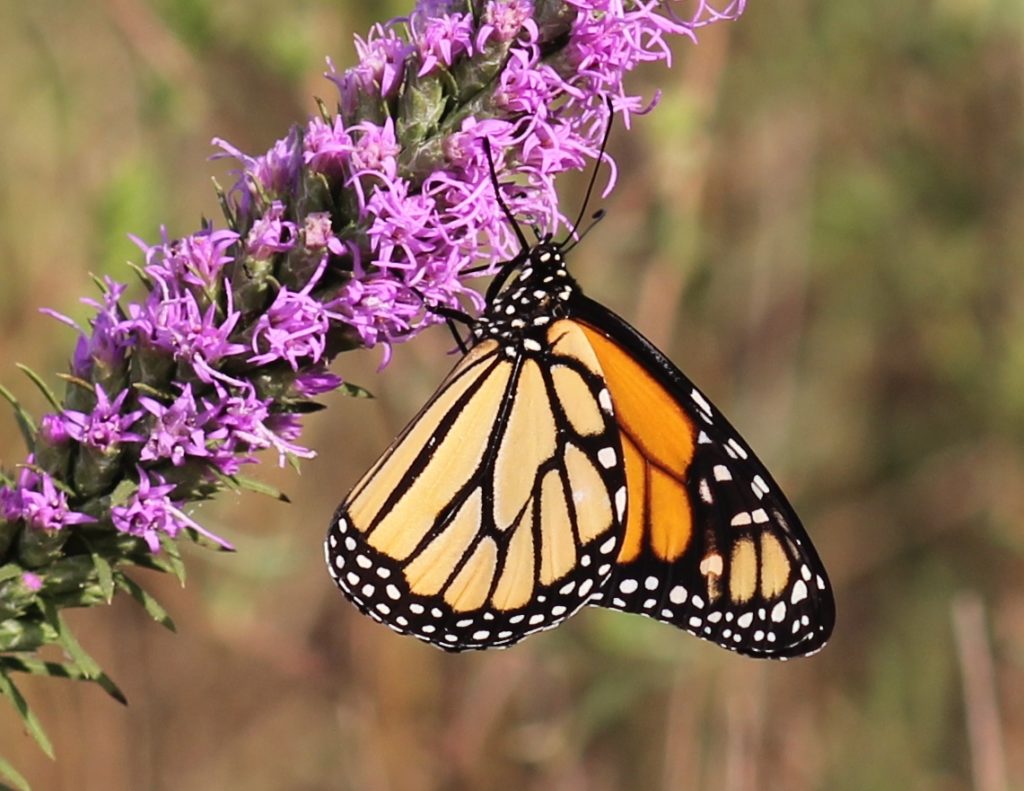
In many parts of the state, intensive agriculture, logging, heavy grazing, development, and other land uses have eliminated many of the Milkweeds and wildflowers that Monarchs and other creatures used to use. We need to replace those resources as quickly as possible if we want to keep as many species as possible. Milkweed isn’t just for Monarchs. It’s a keystone species, important as a rich nectar plant and host plant for many other species.
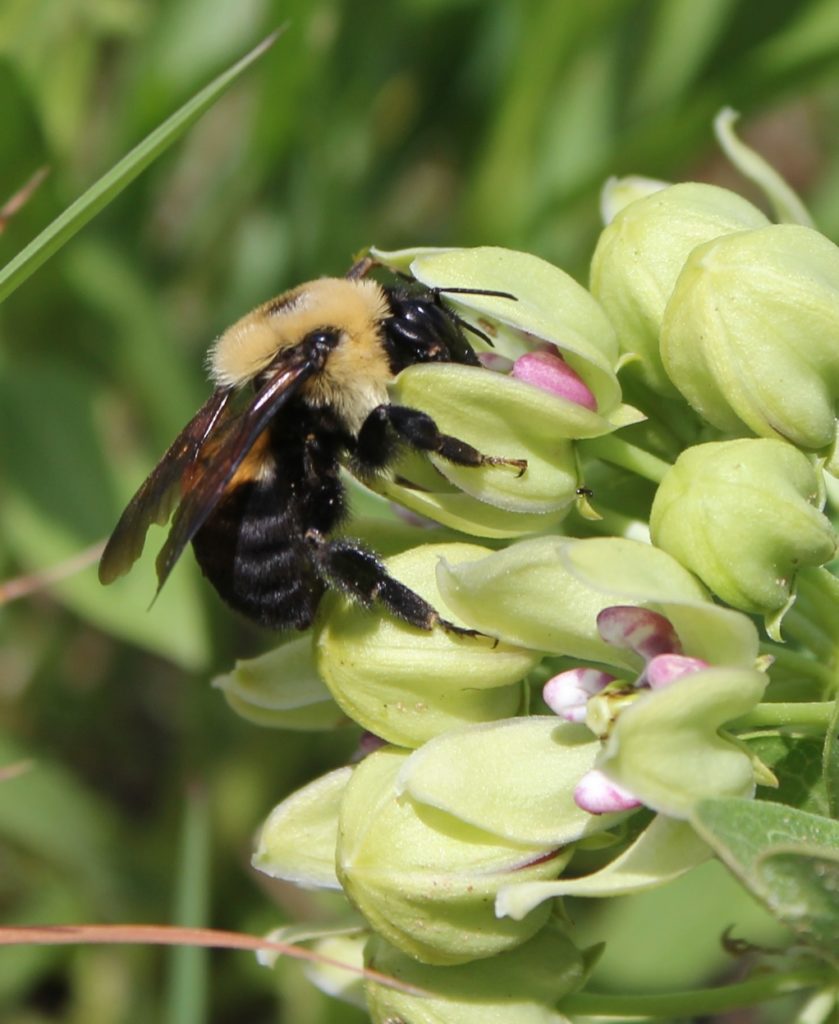
Don’t wait for the government or some other group to step up and solve the problem. Government turns like a big ship, far too slowly for it to have a quick impact. In Texas, 95% of the land is privately owned anyway. Individual action is what is needed to avert further pollinator decline. Start today, at a size you can manage, on any piece of ground you have influence over, planting natives now to maintain hope for a brighter tomorrow.

Let your neighbors know what you are doing and how they can help. Connected habitat corridors are even more valuable than isolated patches of habitat. The more neighbors you can get to join in, the better! Many of our beautiful Texas natives are actually popular garden plants in Europe. If it’s not their style, then there’s no need to subscribe to a “wild look” for your neighbors to enjoy Texas natives in their landscapes.
At the bottom of this essay is a list of easy plants to grow for Monarchs and other pollinators. Ask your local nursery to stock these plants and to work on finding sources of nursery stock that have not been treated with long lasting insecticides like neonicotinoids. That’s important for pollinator success. Too many of the plants we buy for pollinators come pre-poisoned without our knowledge, making them toxic to the animals we are trying to encourage.
For Milkweeds, consider ordering a flat of plugs from Monarch Watch. They will only send plants appropriate for your region, and the cost of growing the plants is partially underwritten by grants to ensure they are economical. If you can’t use a whole flat, think about splitting one with some friends.
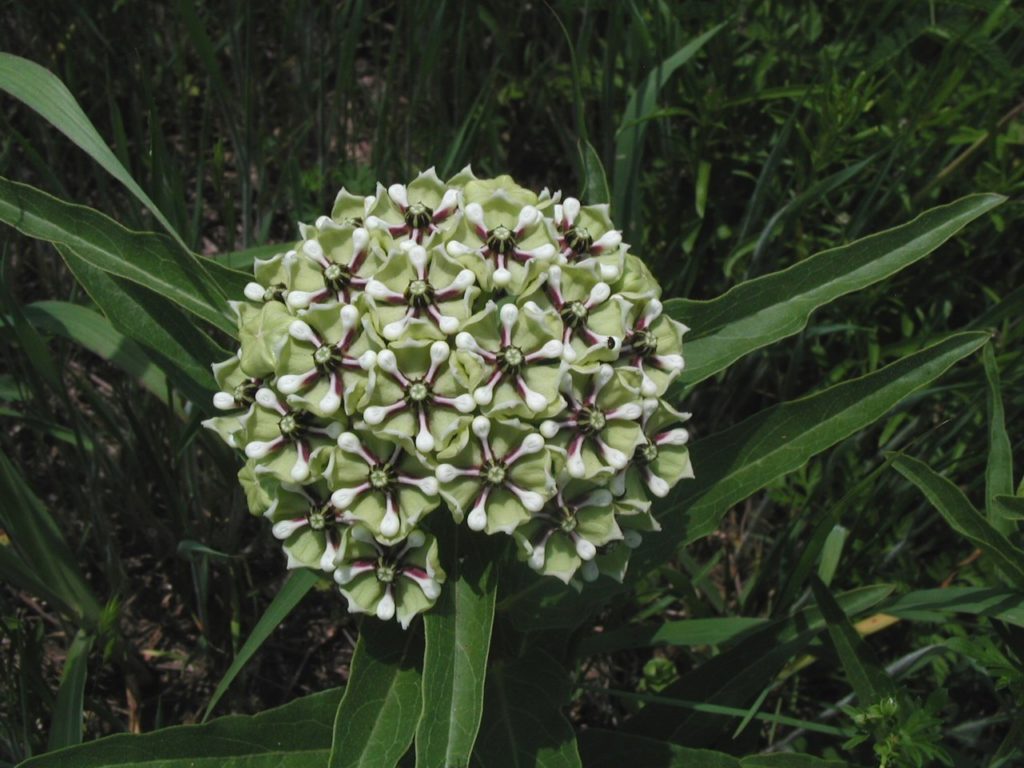
Try some of the plants listed below in your own spaces, and be watchful for other plants in your regional that serve pollinators well.
Buttonbush—Cephalanthus occidentalis
Asters—Symphyotrichum/Aster species
Goldenrod—Solidago species
Blazing Star, Gayfeather –Liatris species
Prairie Verbena—Glandularia bipinnatifida
Frostweed—Verbesina virginica
Texas Vervain—Verbena halei
Sunflowers—Helianthus species
Paintbrush—Castilleja indivisa
Coneflowers—Echinacea species
Zexmenia—Wedelia hispida
Gregg’s Blue Mistflower—Eupatorium/Conoclinium greggii
Skeletonleaf Goldeneye—Viguiera stenoloba
Turk’s Cap—Malvaviscus arboreus drummondii
Pitcher Sage—Salvia azurea
Mealy Blue Sage—Salvia farinacea
Texas Mountain Laurel (Dermatophyllym/Sophora secundiflorum/secundiflora)
Mexican Plum, Prunus mexicana
Horsemint, Beebalms—Monarda species
Prairie Clover—Dalea species
Gaura sp.
Texas Bluestars—Amsonia sp.
Best Milkweeds for Monarch Caterpillars Texas
—MUST BE PESTICIDE FREE!
Green Milkweed—Asclepias viridis
Antelope Horns Milkweed—Asclepias asperula
Hierba de Zizotes Milkweed, Side Cluster Milkweed—Asclepias oenotheroides
There is a great pleasure in working in the soil, apart from the ownership of it. The man who has planted a garden feels that he has done something for the good of the world.
Unknown
Go forth, unleash beauty and hope, and be part of the solution.
